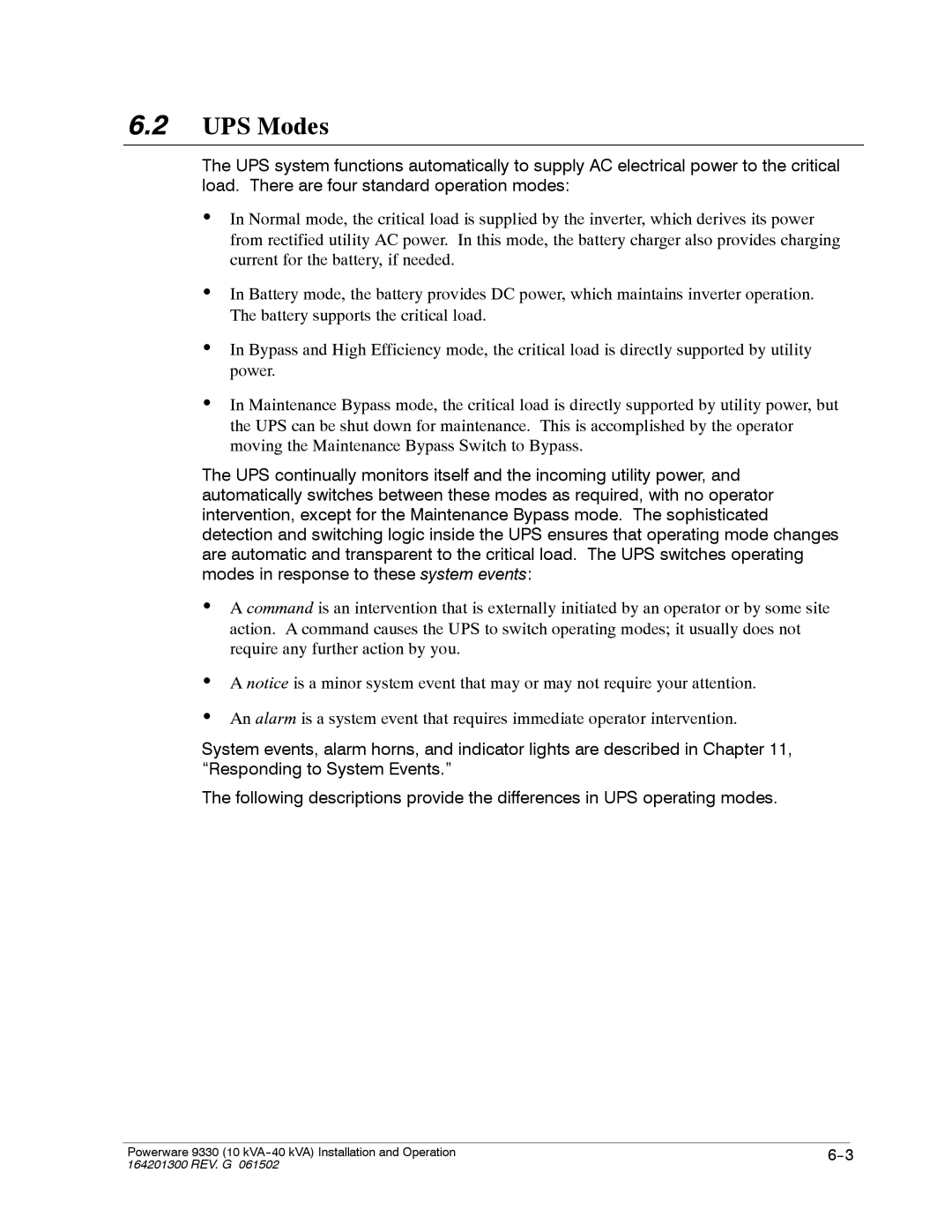6.2UPS Modes
The UPS system functions automatically to supply AC electrical power to the critical load. There are four standard operation modes:
·In Normal mode, the critical load is supplied by the inverter, which derives its power from rectified utility AC power. In this mode, the battery charger also provides charging current for the battery, if needed.
·In Battery mode, the battery provides DC power, which maintains inverter operation. The battery supports the critical load.
·In Bypass and High Efficiency mode, the critical load is directly supported by utility power.
·In Maintenance Bypass mode, the critical load is directly supported by utility power, but the UPS can be shut down for maintenance. This is accomplished by the operator moving the Maintenance Bypass Switch to Bypass.
The UPS continually monitors itself and the incoming utility power, and automatically switches between these modes as required, with no operator intervention, except for the Maintenance Bypass mode. The sophisticated detection and switching logic inside the UPS ensures that operating mode changes are automatic and transparent to the critical load. The UPS switches operating modes in response to these system events:
·A command is an intervention that is externally initiated by an operator or by some site action. A command causes the UPS to switch operating modes; it usually does not require any further action by you.
·A notice is a minor system event that may or may not require your attention.
·An alarm is a system event that requires immediate operator intervention.
System events, alarm horns, and indicator lights are described in Chapter 11, “Responding to System Events.”
The following descriptions provide the differences in UPS operating modes.
|
|
|
Powerware 9330 (10 | ||
164201300 REV. G 061502 |
|
|
